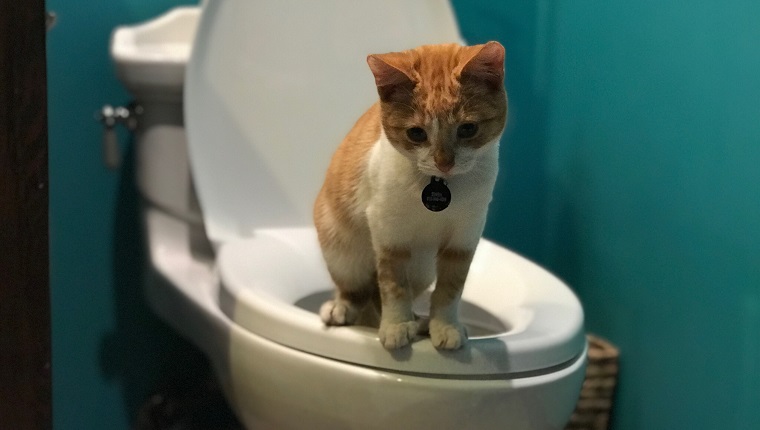Prevent Clogs and Damage: Don't Flush Cat Poop Down Your Toilet - Expert Insights
Prevent Clogs and Damage: Don't Flush Cat Poop Down Your Toilet - Expert Insights
Blog Article
We've stumbled upon the article on How to Dispose of Cat Poop and Litter Without Plastic Bags below on the web and felt it made perfect sense to share it with you in this article.

Intro
As cat proprietors, it's essential to bear in mind how we take care of our feline pals' waste. While it might seem hassle-free to flush feline poop down the bathroom, this technique can have harmful effects for both the atmosphere and human wellness.
Environmental Impact
Flushing pet cat poop introduces dangerous pathogens and parasites into the water system, posing a considerable risk to marine ecosystems. These pollutants can negatively influence aquatic life and compromise water high quality.
Health and wellness Risks
In addition to environmental problems, flushing cat waste can additionally position health risks to humans. Cat feces may have Toxoplasma gondii, a parasite that can trigger toxoplasmosis-- a possibly extreme health problem, specifically for pregnant ladies and individuals with damaged body immune systems.
Alternatives to Flushing
Thankfully, there are much safer and a lot more liable means to deal with pet cat poop. Consider the following options:
1. Scoop and Dispose in Trash
One of the most typical technique of taking care of cat poop is to scoop it into a biodegradable bag and throw it in the trash. Make sure to utilize a specialized trash scoop and get rid of the waste immediately.
2. Usage Biodegradable Litter
Select eco-friendly pet cat clutter made from products such as corn or wheat. These trashes are eco-friendly and can be securely taken care of in the garbage.
3. Hide in the Yard
If you have a lawn, think about burying cat waste in a designated area far from veggie yards and water resources. Make certain to dig deep adequate to avoid contamination of groundwater.
4. Set Up a Pet Waste Disposal System
Purchase an animal waste disposal system specifically made for feline waste. These systems utilize enzymes to break down the waste, decreasing odor and environmental influence.
Verdict
Accountable animal ownership expands beyond offering food and sanctuary-- it additionally includes proper waste management. By avoiding purging cat poop down the commode and selecting alternate disposal methods, we can decrease our environmental footprint and secure human health and wellness.
Why Can’t I Flush Cat Poop?
It Spreads a Parasite
Cats are frequently infected with a parasite called toxoplasma gondii. The parasite causes an infection called toxoplasmosis. It is usually harmless to cats. The parasite only uses cat poop as a host for its eggs. Otherwise, the cat’s immune system usually keeps the infection at low enough levels to maintain its own health. But it does not stop the develop of eggs. These eggs are tiny and surprisingly tough. They may survive for a year before they begin to grow. But that’s the problem.
Our wastewater system is not designed to deal with toxoplasmosis eggs. Instead, most eggs will flush from your toilet into sewers and wastewater management plants. After the sewage is treated for many other harmful things in it, it is typically released into local rivers, lakes, or oceans. Here, the toxoplasmosis eggs can find new hosts, including starfish, crabs, otters, and many other wildlife. For many, this is a significant risk to their health. Toxoplasmosis can also end up infecting water sources that are important for agriculture, which means our deer, pigs, and sheep can get infected too.
Is There Risk to Humans?
There can be a risk to human life from flushing cat poop down the toilet. If you do so, the parasites from your cat’s poop can end up in shellfish, game animals, or livestock. If this meat is then served raw or undercooked, the people who eat it can get sick.
In fact, according to the CDC, 40 million people in the United States are infected with toxoplasma gondii. They get it from exposure to infected seafood, or from some kind of cat poop contamination, like drinking from a stream that is contaminated or touching anything that has come into contact with cat poop. That includes just cleaning a cat litter box.
Most people who get infected with these parasites will not develop any symptoms. However, for pregnant women or for those with compromised immune systems, the parasite can cause severe health problems.
How to Handle Cat Poop
The best way to handle cat poop is actually to clean the box more often. The eggs that the parasite sheds will not become active until one to five days after the cat poops. That means that if you clean daily, you’re much less likely to come into direct contact with infectious eggs.
That said, always dispose of cat poop in the garbage and not down the toilet. Wash your hands before and after you clean the litter box, and bring the bag of poop right outside to your garbage bins.
https://trenchlesssolutionsusa.com/why-cant-i-flush-cat-poop/

Do you really like reading up on Can You Flush Cat Poo or Litter Down the Toilet?? Try to leave feedback directly below. We will be pleased to hear your suggestions about this post. In hopes that you come back again later on. Do you know someone else who is in to Can You Flush Cat Poo or Litter Down the Toilet?? Feel free to share it. Many thanks for your time. Please check up our site back soon.
Schedule Today! Report this page